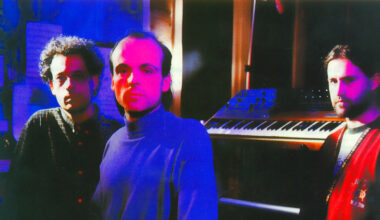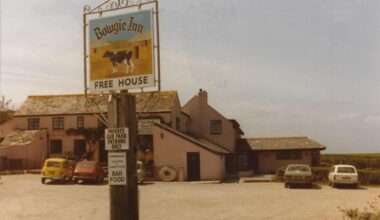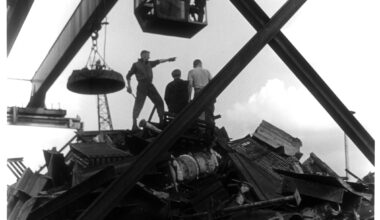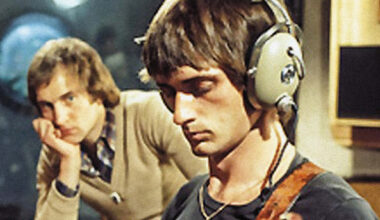Following the recent reissue of ‘Musical Offering’ from 1971, featuring music composed on the Soviet-made ANS synthesiser, Scanner recalls a visit to Moscow where he first saw the legendary machine
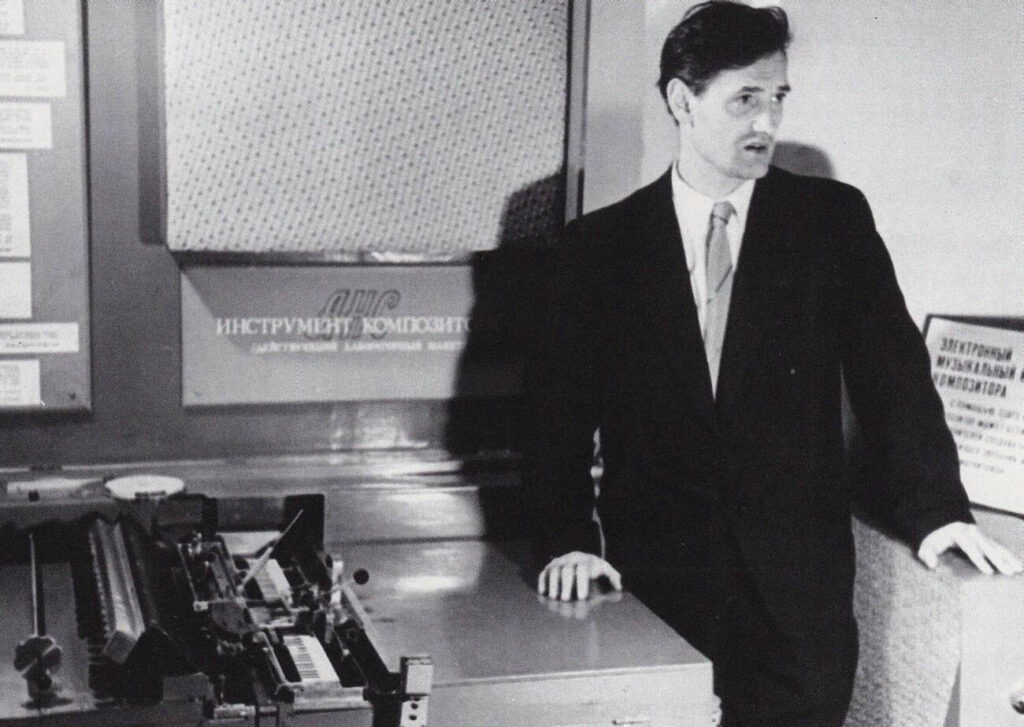
Moscow, September 2004. I’ve been invited to give a talk at the Theremin Center, situated in the Moscow Conservatory Centre for Electroacoustic Music (CEAMMC). Walking through the doors of this elegant building, I’m met by Andrey Smirnov, an interdisciplinary artist and independent curator, who founded this space back in 1992.
As he leads me towards the staircase, my eyes are immediately drawn towards a large neglected-looking wooden object at the base of the steps, like a cross between an elongated accordion and a printing press. Smirnov catches my glance and explains that this bulky box, covered in a layer of dust, is the ANS synthesiser – “a visual synth”, as he explains it – which quietly lives here as it cannot be moved upstairs owing to its sheer weight. My curiosity is piqued and I desperately need to learn more.
Discovering such detail was quite a challenge in 2004, and little did I realise I’d already heard the sounds of this very synthesiser in film scores. But today, thanks to the global internet highway, the full colourful tale can be told. Strap in for a history lesson and a little time-travelling.
Remarkably, graphical sound as a concept has been around for almost 100 years, with the development of sound on film taking place almost simultaneously in the USA, the USSR and Germany. In Soviet Russia, Pavel Tager initiated developments in 1926 with his Tagephon, which focused on intensive variable density optical recording on film. It was followed by Alexander Shorin’s Shorinophone which, with its mechanical reproduction of gramophone-like grooves along the filmstrip itself, was widely used for field and studio sound recording.
Then in 1929, the painter, illustrator and animator Mikhail Tsekhanovsky began working with engineer Evgeny Sholpo and composer, inventor and writer Arseny Avraamov. Avraamov actually foreshadowed some of the most important musical trends of the second half of the 20th century, but was largely forgotten after his death in 1944. His ‘Symphony Of Factory Sirens’ (1922) used cannons, machine guns, sirens and a brass band – literally the sound of the city. He pioneered the use of non-musical instruments, predicting contemporary work by Einstürzende Neubauten, Burial, Test Dept and others.
Tsekhanovsky proposed a fascinating idea: “What if we take some Egyptian or ancient Greek ornaments as a soundtrack? Perhaps we will hear some unknown archaic music?” He was ostensibly thinking of the shapes of vases and how these could be used to create waveforms to physically generate sound.
These sonic labs were precursors of the many experimental music centres around the globe, such as INA GRM in Paris, the San Francisco Tape Music Center and the BBC Radiophonic Workshop.
Interestingly, these graphical sound developments focused on the composer, not the performer, anticipating the bedroom producer of today, where the composer is able to create the final work at home without any need for a studio or additional performers.
More quirkily named systems continued to be developed – Shorin’s The Kinap and Sholpo’s The Variophone – while in Germany, animator and filmmaker Oskar Fischinger wrote in 1932:
“If you look at a strip of film from my experiments with synthetic sound, you will see along one edge a thin stripe of jagged ornamental patterns. These ornaments are drawn music – they are sound: when run through a projector, these graphic sounds broadcast tones of a hitherto unheard-of purity, and thus, quite obviously, fantastic possibilities open up for the composition of music in the future.”
The future finally arrived for audio engineer and inventor Yevgeny Murzin in 1938 with his ANS synthesiser. Rather controversially, he also proposed that the music of the future be made without either musicians or even musical instruments. As with earlier developments, he was keen to create a system that could synthesise sound from an artificially drawn sound waves, but such technologies moved slowly, and it wasn’t until 1958 that Murzin was able to finally establish a laboratory with engineers to design the ANS synth. Only two were actually ever built, and the sole surviving model is the mournful-looking machine I chanced upon during my Moscow visit.
It’s important to remember that the challenges weren’t only technical but also legal, as documented in the illuminating 2013 film ‘Elektro Moskva’. The story of these synthesisers might be considered an allegory of life under the Soviet system itself – nothing works, but you simply make the best of it – and building such instruments could even be considered unlawful.
“There were only a few places where this kind of research into new musical instruments was supported by the state,” Smirnov told me. “Anything private was prohibited. You could not buy any electronic components, you had to steal them from the institutions. So each inventor was a criminal, otherwise they couldn’t invent anything. Murzin did not wait for state support, he was just doing his work like a hero for himself and his wife. He could have had to wait dozens of years for state support, without being successful.”
Even the name, ANS, is taken from a musical rebel – Alexander Nikolayevich Scriabin, who developed his own atonal music system based on theosophy and mysticism, a man who was obsessed with “the devil’s interval” in music.
So, as you might imagine, creating music with the ANS is challenging. The composer needs to inscribe their visual score onto a glass plate. This is then slid through the machine, which reads the notation and transcribes it into sound. With 720 sine waves printed over five glass discs, the sound is immense, and additionally controllable by a photocell-based filter bank. With the recent reissue of ‘Музыкальное Приношение’ (‘Musical Offering’) on British label Cold Spring, it’s now possible to experience the majestic sonic colours of this innovation. Originally released on Melodiya, the state-owned major record company of the Soviet Union, this is the first official opportunity most of us have had to listen to these compositions from the 1960s and 70s.
Including works from Eduard Artemyev, Oleg Buloshkin, Sofia Gubaidulina, Edison Denisov and Alfred Schnittke, the album is a wild explorative ride on an electronic sea, featuring spectral densities, blurred edges and eerie, otherworldly sounds. Some listeners may already be familiar with Artemyev’s film scores for Andrei Tarkovsky movies, such as 1972’s ‘Solaris’, which used the ANS to reflect its sombre and wintery world.
Other noteworthy but equally rare ANS encounters can be heard on recordings by mercurial counterculturists Coil on their 2004 three-CD ‘ANS’ set, which presents four hours of abstract sine waves floating in the ether, and on 1996’s ‘Deepnet’ album by Clock DVA’s Adi Newton under his TAGC guise. For a while there was even a mobile app, Virtual ANS, where the user could draw onto the screen of their mobile, but sadly it seems to be no longer available.
These inventors of sound saw far ahead into our future. Despite the obscurity of the ANS synthesiser, the ideas around it can still inspire composers today. Resisting the status quo, taking risks and refusing to be censored can often lead to the most revelatory creations. Embrace the possibilities!
‘Музыкальное Приношение’ (‘Musical Offering’) is out now on Cold Spring
